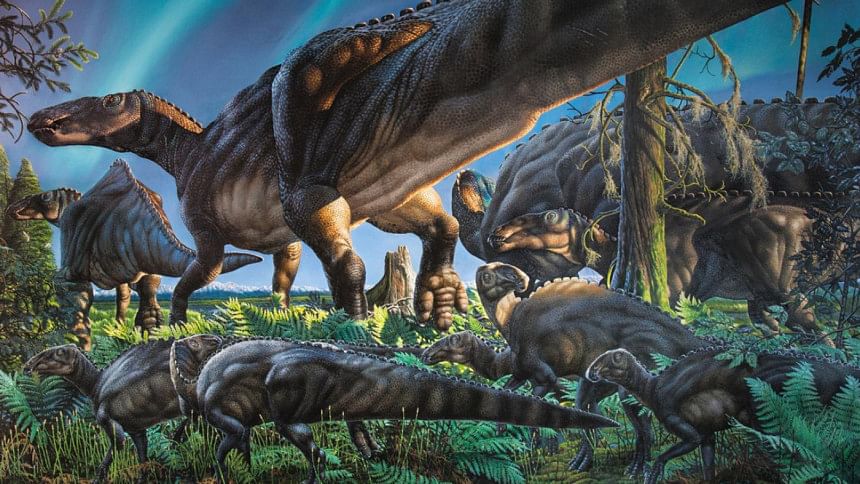New Arctic discovery 'challenges our thought' on dinosaurs

Imagine dinosaurs, the majestic beasts that roamed planet earth some 250 million years ago in the Mesozoic era and images of towering creatures pushing through jungle shrouded in the dense vegetation and surrounded by tropical foliage come to mind.
However, as researchers looked further afield, they discovered remains from these creatures further and further from the tropics and temperate zones, into the Polar regions, reports Business Insider.
According to Business Insider, a new discovery shows that dinosaurs lived in environments so harsh they may have been very different creatures than we once thought.
On September 22, researchers working with the University of Alaska Museum of the North published a paper describing the discovery of a 30-foot-long duck-billed dinosaur that lived in the Arctic at the very top of Alaska, the furthest north of any known dinosaur species.
That a previously unknown unique species lived in a place with snowy, icy winters and four months without seeing the sun every year — the sort of environment we didn't know they could survive in — shows that the dinosaurs might have been tougher, hardier, and more diverse than we knew, reports Business Insider.
This new species is in the hadrosaur family and is named Ugrunaaluk kuukpikensis, meaning "ancient grazer" in the language of the local Alaskan Native Iñupiaq culture.
"It had crests along its back like Godzilla," one of its discoverers, Florida State University biological sciences professor Gregory Erickson, told The New York Times.
Along with Godzilla-like crests and scales, scientists say that the dinosaur was approximately six or seven feet tall at the hip and could walk on all fours, despite the fact that its back legs were much longer than its front legs.
Its mouth was filled with hundreds of grinding teeth that would have helped it tear through coarse vegetation, which might have been all that was available in the Arctic winters. The press release notes that Erickson and co-discoverer Pat Druckenmiller previously have shown that the Alaskan Arctic was covered in a type of polar forest back in the Cretaceous Period, when this dinosaur would have roamed the land, approximately 69 million years ago.
It was warmer then than now, but winters would still have been snowy and mostly lifeless, and the Arctic would have been dark for months at a time in winter.
The bones of the Ugrunaaluk kuukpikensi came from an area known as the Liscomb Bone Bed along the Colville River.
This area, in a region known as the North Slope of Alaska, is a tough place to reach. Researchers told the Times that a journey there involves a 500-mile drive from Fairbanks before they board a plane with "balloon tires." They have to navigate the area itself in rubber boats. But all that effort is worth it: The site is a treasure trove where bones from three species of dinosaur have been found, reports Business Insider.
While most of those fossil records are still incomplete, there are more than 6,000 bones from the newly discovered grazer, providing what the researchers describe as "multiple elements of every single bone in the body" — enough to describe a new dinosaur.
"The finding of dinosaurs this far north challenges everything we thought about a dinosaur's physiology," Erickson said in the press release. "It creates this natural question. How did they survive up here?"
The research was published in the International journal Acta Palaeontologica Polonica.

 For all latest news, follow The Daily Star's Google News channel.
For all latest news, follow The Daily Star's Google News channel. 



Comments